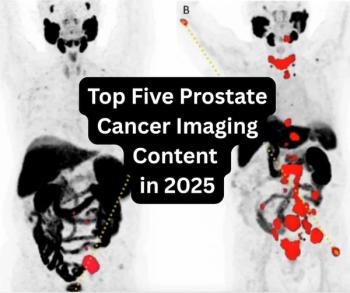
Whole-body Diffusion-weight MRI for Myeloma Treatment Response
Using whole-body diffusion-weight imaging for patients with myeloma may help clinicians determine the treatment response.
Whole-body diffusion-weight (DW) imaging is a repeatable, quantifiable technique for assessment of treatment response in myeloma, according to a study published in the journal
Researchers from the United Kingdom undertook a prospective study to determine the feasibility of whole body DW MRI to assess the response to myeloma treatment. They recruited 49 subjects who were divided into two cohorts. Fifteen subjects made up cohort 1, eight healthy subjects (cohort 1A) and seven who had myeloma (cohort 1B). The remaining 15 patients comprised cohort 2.
The subjects in cohort 1 were imaged twice to assess the repeatability of the quantitative apparent diffusion coefficient (ADC) estimates. All subjects in cohort 2 underwent pretreatment scans and 26 underwent post-treatment imaging.
“Whole-body DW data were compared before and after treatment by using qualitative (ie, observer scores) and quantitative (ie, whole-body segmentation of marrow ADC) methods,” wrote the authors. Serum paraproteins and/or light chains or bone marrow biopsy defined response.
The results showed that while the whole-body DW imaging scores varied significantly between readers, the change in scores between readers after treatment did not. Sensitivity and specificity for detecting response according to observer scores were 86 percent, among 18 of 21 patients, and 80 percent, four of five patients, for both observers. ADC measurement was repeatable. The mean coefficient of variation was 3.8 percent in the healthy volunteers and 2.8 percent in the patients with myeloma.
“The pretreatment ADC in cohort 2 was significantly different from that in cohort 1a, but not from that in cohort 1b.” the authors wrote. Nineteen of the 20 responding patients (95 percent) showed an increase in mean ADC, which decreased in all five of five nonresponders. An increase of 3.3 percent in ADC helped identify response with 90 percent sensitivity and 100 percent specificity. An 8 percent increase resulted in 70 percent sensitivity and 10 percent specificity.
The authors concluded that this preliminary work does demonstrate the utility of whole-body DW imaging in determining the treatment response among patients with myeloma.
Newsletter
Stay at the forefront of radiology with the Diagnostic Imaging newsletter, delivering the latest news, clinical insights, and imaging advancements for today’s radiologists.



























